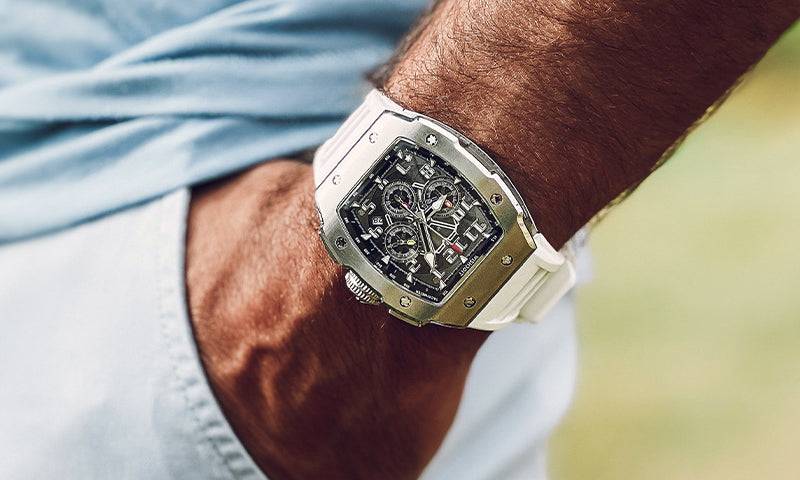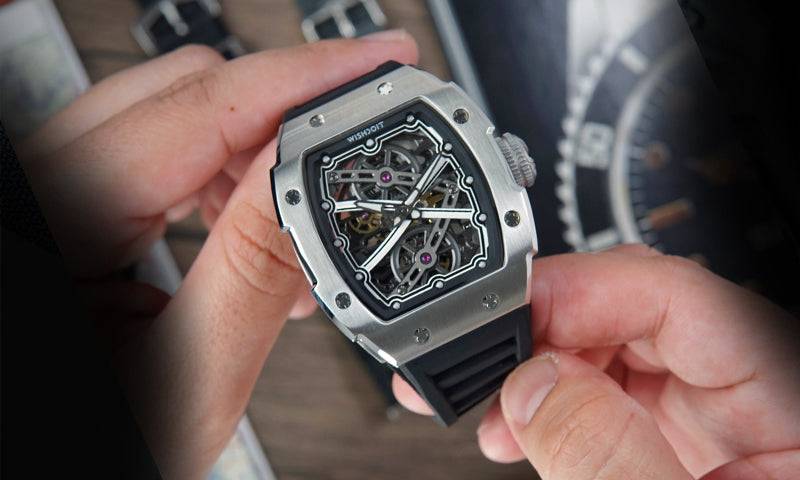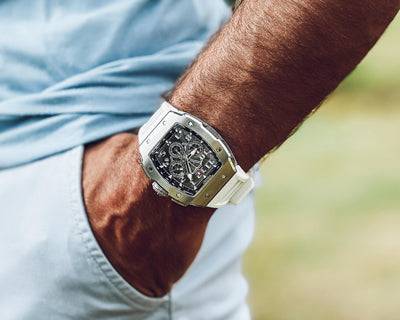Composer and conductor Bernstein described the invention as the worst invention since coughing. He was referring to those electronic multifunction watches. The clocks rang out in a cacophony of synthetic sounds, interfering with the most delicate muted fragments.
Bernstein has had no chance to see that today's mechanical watch renaissance has driven away this harassment of our hearing. But the classic mechanical watch is not enough to free people from today's hectic schedules completely from acoustic reminders. Those who know a thing or two about the history of watches must know that alarms are the oldest complication on watches, first used on clocks. This complication either chimes in the walls of the bell or in the bell tower. Increasing mobility calls for portable alarm functions. The portable alarm clock contributes to the independence of human beings.
In the 16th century, people relied on alarm modules mounted on clocks to wake themselves up when needed. The next step is the portable or travel alarm clock.
Have you listened carefully to the mechanical operation bell on the watch?
In 1908, when the watch was still in its infancy, Swiss manufacturer Eterna filed a patent for the watch. From 1914, it served in the trenches of the First World War. This watch has a protective mesh on the lens.
However, the alarm watch didn't last long. Mainly in those days, wearing a watch on the wrist was inherently funny, not to mention making a sound. Men at this time act, to be honest, not as good as women. They don't buy this alarm clock. Later, others complained that the alarm sound was too weak. At least they complained that the alarm sound was insignificant compared to the sound of enemy fire.
It wasn't until the 1940s that Vulcain addressed some of the shortcomings of the early alarm clocks with a clever solution. For example, the double-layer case solves the obstacle of the wrist to the resonance of the alarm. Openings on the case allow the alarm to be heard from as far away as possible, and at the same time, make the alarm last longer. When the mainspring is properly wound, the alarm can sound at the set time, and its sound cannot be ignored.
Thanks to these improvements, time-pressured senior executives have finally discovered this small, general-purpose ingenuity. The alarm clock not only replaces the wake-up number, but also reduces the burden of memory. It signals the last moments of important events. Nothing could stop the global success of the alarm watch (or the watch that was already a teenager at the time). The watch industry seized the opportunity.
Although controversial, it is recognized that the most successful alarm watch movement was introduced in 1945 by the professional movement manufacturer AS. Between then and 1970, at least 780,000 units of this movement were shipped. This double-barrel, 11-ligature AS1475 movement is supplied to several watchmakers. A total of 1.5 million units of this movement were sold in its different variants and modifications.





























